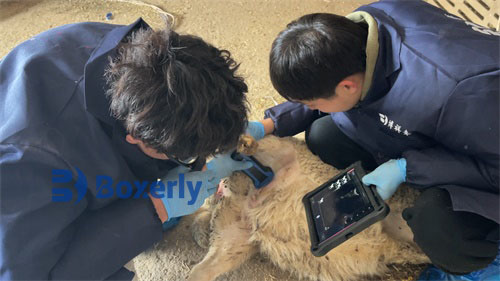Bovine embryo transfer is a complex and highly technical biotechnology that has been widely used in modern animal husbandry. Choosing the appropriate embryo transfer equipment and using it correctly can significantly improve the success rate of embryo transfer. As an animal breeding equipment supplier, Hengjinlai provides you with high-quality embryo transfer equipment and usage guidance to ensure that every transplant can achieve results.
1. Selection of embryo transfer equipment
Choosing appropriate embryo transfer equipment is the first prerequisite to ensure a smooth operation. Here are a few key factors to consider when selecting equipment:
Equipment performance
High precision: The equipment should have high-precision operating functions to ensure the safety and integrity of the embryos during the transplantation process.
Stability: The stability of the equipment directly affects the smoothness of the operation and prevents equipment failure from affecting the success rate of transplantation.
Easy to operate
Easy to operate: The equipment should be designed to be simple and user-friendly, making it easy for operators to use.
Visualization: Equipped with a high-definition display screen and operation guide, it is convenient for operators to monitor and adjust operations in real time.
Quality assurance
Durability: Equipment materials should be durable and able to adapt to various complex operating environments.
Brand reputation: Choose a brand with good reputation and after-sales guarantee.
Supporting consumables
Complete supporting facilities: The equipment should be equipped with complete consumables, such as transplantation tubes, culture medium, etc., to ensure that the entire transplantation process proceeds smoothly.
Good compatibility: Consumables should be highly compatible with the equipment to avoid operation failure due to incompatibility issues.
2. Procedures for using embryo transfer equipment
After selecting the appropriate equipment, correct use is also key to ensuring a successful embryo transfer. The following are the basic steps for embryo transfer:
Preparation
Equipment inspection: Before operation, ensure that all equipment is working properly and check whether consumables such as transplant tubes and culture media are complete.
Environmental disinfection: The operating environment needs to be strictly disinfected to ensure aseptic operation and avoid infection.
embryo collection
Ultrasound guidance: Use a bovine live egg collection B-ultrasound machine for ultrasound guidance to accurately locate the ovaries and follicles to ensure the accuracy of embryo collection.
Follicle puncture: Use a special egg collection needle to puncture follicles under ultrasound guidance to collect oocytes.
embryo culture
Culture environment: Embryo culture is carried out in a special incubator to ensure appropriate temperature, humidity and gas environment.
Embryo monitoring: Monitor embryo development regularly to ensure healthy embryo development.
embryo transfer
Receptor preparation: Select healthy recipient cows and perform corresponding hormone treatment to ensure that the recipient has a good fertilization environment.
Embryo transfer: Use an embryo transfer gun to accurately transplant the embryo into the uterus of the recipient cow to ensure the survival and development of the embryo.
3. Precautions
During the embryo transfer process, there are some key considerations that require special attention:
Operating specifications: Strictly follow the operating specifications to ensure the accuracy and safety of every step of the operation.
Aseptic operation: Always maintain aseptic operation to avoid embryo contamination and infection.
Recipient health: Select healthy, age-appropriate recipient cows to ensure they have good physiological conditions.
Timely monitoring: After transplantation, timely monitor the health status and embryonic development of the recipient cow to ensure that problems are discovered and dealt with in a timely manner.
The selection and use of bovine embryo transfer equipment directly affects the success rate of embryo transfer. We hope that the introduction in this article can provide you with useful guidance when selecting and using embryo transfer equipment. Let us work together to promote the healthy development of animal husbandry.
For more information or technical support, please visit the official website of Boxianglai Animal Breeding Equipment or call the customer service hotline. We will serve you wholeheartedly.








